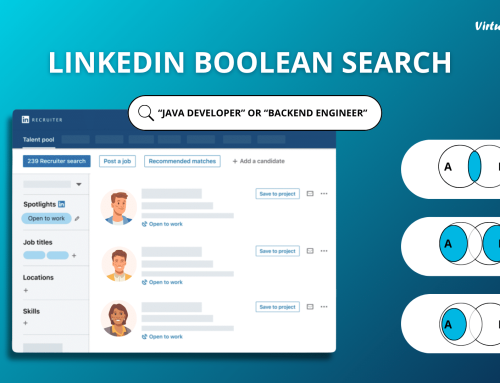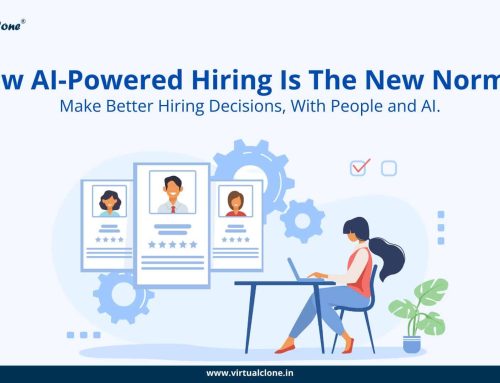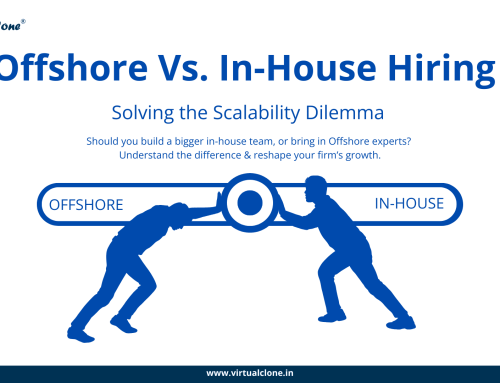The recruitment process trends are evolving rapidly, driven by advancements in technology, shifting workforce dynamics, and a growing focus on diversity, sustainability, and ethical hiring. As we move into 2024, businesses are increasingly looking to Recruitment Process Outsourcing (RPO) providers to stay ahead of these trends and optimize their hiring strategies. Let’s explore the top recruitment process trends shaping the RPO industry this year.
1. Rise of AI and Automation in Recruitment Process Trends
AI and automation are transforming recruitment process trends, making hiring faster, smarter, and more efficient. Here’s how these technologies are shaping the industry:
– AI Tools: Automating Candidate Sourcing, Screening, and Scheduling
AI tools are helping recruiters by automatically finding and sorting candidates. These tools can scan job boards, social media, and databases to identify suitable candidates, screen their resumes for qualifications, and even schedule interviews without human involvement. This saves recruiters a lot of time and effort.
– Efficiency Boost: AI Reduces Hiring Time by Finding Better Candidate Matches
AI helps companies find the right people for the job much faster. It analyzes candidate profiles and matches them with job requirements more accurately than traditional methods. This reduces the time spent on hiring and ensures that the best candidates are identified more quickly.
– Machine Learning: Predicts Candidate Success Based on Data from Past Hires
Machine learning, a type of AI, can predict which candidates are most likely to succeed in a role by analyzing data from previous hires. It looks for patterns, such as specific skills or experiences that successful employees had, and uses that information to recommend the best candidates for current openings.
– Virtual Assistants: AI Chatbots Handle Initial Candidate Queries, Saving Time for Recruiters
AI-powered chatbots, or virtual assistants, can answer candidates’ common questions about the job or application process. They are available 24/7 and provide quick responses, which improves the candidate experience. By handling these initial queries, chatbots free up time for recruiters to focus on more complex tasks.
These recruitment process trends show how AI and automation are helping companies streamline their hiring efforts, ultimately improving both efficiency and effectiveness in identifying top talent.
2. Focus on Candidate Experience
Enhancing candidate experience continues to be a top priority in 2024, and it’s a key element of emerging recruitment process trends. Let’s break down the key ways businesses are improving the candidate experience:
– Improved Communication: Faster and Transparent Updates to Candidates
In the past, candidates often waited a long time for updates on their job applications. Now, companies are focusing on improving communication by keeping candidates informed at every step of the hiring process. Whether it’s a simple update on the status of their application or feedback after an interview, providing fast and clear communication helps candidates feel valued and reduces uncertainty.
– Personalized Journey: Tailored Experiences Based on Candidate Preferences
Every candidate is unique, so companies are now offering personalized experiences during the hiring process. This could mean customizing interview schedules to fit a candidate’s availability or offering personalized feedback based on their skills and background. By tailoring the recruitment process to each candidate’s needs and preferences, companies make the experience more enjoyable and engaging.
– Employer Branding: Positive Experiences Enhance the Company’s Image
The way a company treats its job applicants directly impacts its reputation. When candidates have a smooth and respectful hiring experience, they’re more likely to speak positively about the company, even if they don’t get the job. This helps build a strong employer brand, making the company more attractive to future candidates and enhancing its overall image in the job market.
– Mobile-Friendly Process: Ensuring Application Processes Are Seamless on Mobile Devices
With more people using smartphones to search for jobs, companies are making their application processes mobile-friendly. This means candidates can easily apply for jobs, submit documents, and track their progress from their phones. A smooth mobile experience ensures that applying for a job is quick and easy, improving the overall candidate experience.
Focusing on the candidate experience is crucial for companies looking to attract and retain top talent. By improving communication, personalizing the recruitment journey, building a strong employer brand, and ensuring mobile-friendly applications, businesses create a positive and engaging experience for candidates.
3. Hybrid and Remote Hiring Models
Recruitment process trends reflect the increasing popularity of hybrid and remote hiring models, offering companies greater flexibility. Here’s how these models work:
– Remote Workforce: Hiring Talent from Anywhere, Not Limited to Location
With remote hiring, companies can find and hire employees from anywhere in the world. This means they are no longer limited to people who live near the office. As long as someone has the right skills, they can work from any location.
– Global Talent Pool: Access to Specialized Skills from Diverse Regions
By hiring remotely, companies can tap into a global talent pool. This gives them access to highly specialized skills from different regions, making it easier to find the perfect match for a job, regardless of where the candidate is located.
– Cost Savings: Reducing Office Overhead by Hiring Remotely
Remote hiring also helps companies save money. Without the need for large office spaces or equipment for in-office staff, businesses can reduce overhead costs like rent, utilities, and office supplies.
– Flexible Hours: Accommodating Different Time Zones with Flexible Work Schedules
With employees working in different time zones, companies are adopting more flexible work schedules. This means employees can choose hours that suit their location and personal needs, helping them maintain a better work-life balance while still contributing effectively to the team.
Hybrid and remote hiring models allow companies to access a wider range of talent, reduce costs, and offer flexible working conditions. By embracing these models, businesses can find the best candidates from around the world while providing more freedom and flexibility to their employees.
4. Diversity, Equity and Inclusion (DEI) Initiatives
Diversity, Equity, and Inclusion (DEI) initiatives aim to make the workplace more inclusive and fair for everyone. Here’s how companies are implementing DEI in their hiring processes:
– Diverse Talent Pools: Focusing on Gender, Ethnicity, and Background Diversity
Companies are actively seeking to build diverse teams by hiring people from different genders, ethnicities, and cultural backgrounds. This focus on diversity helps create a more balanced and innovative workforce by bringing in various perspectives and experiences.
– Unbiased Hiring: Using AI to Remove Bias in Screening and Interviews
AI technology is being used to help make hiring fairer by removing human bias from the screening and interview process. AI can analyze resumes and candidates based only on their skills and qualifications, reducing the chances of unconscious bias affecting hiring decisions.
– Inclusivity: Creating Fair Opportunities for Candidates from All Walks of Life
Inclusivity means giving everyone an equal chance, regardless of their background, gender, race, or abilities. Companies are focusing on creating a hiring process that offers fair opportunities to all candidates, ensuring that no one is left out based on who they are.
– Targeted Outreach: Actively Recruiting from Underrepresented Groups to Promote Diversity
To promote diversity, companies are making special efforts to reach out to underrepresented groups. By actively recruiting from these groups, businesses can help create a more inclusive workforce that reflects the diversity of society.
DEI initiatives help companies build fairer and more diverse workplaces by focusing on inclusivity, removing bias from hiring, and reaching out to underrepresented groups. These efforts lead to stronger, more innovative teams and a better work environment for everyone.
5. Data-Driven Recruitment Strategies
Data-driven recruitment means using information and metrics to make smarter hiring decisions. Here’s how companies are using data to improve their recruitment process:
– Key Metrics: Tracking Time-to-Hire, Cost-per-Hire, and Quality-of-Hire
Companies are tracking important metrics like how long it takes to fill a job (time-to-hire), how much it costs to hire someone (cost-per-hire), and the success of the new hire (quality-of-hire). By monitoring these numbers, businesses can see where they need to improve and make their recruitment process more efficient.
– Data Insights: Using Past Data to Predict and Improve Future Hiring
By looking at past hiring data, companies can learn what worked well and what didn’t. This helps them make better decisions in the future, such as where to find the best candidates or which interview methods lead to successful hires.
– Optimization: Analyzing Hiring Data to Streamline and Make Recruitment More Cost-Effective
Analyzing hiring data helps companies streamline the recruitment process by identifying areas where they can save time and money. For example, they might find ways to shorten the hiring timeline or reduce the cost of advertising job openings, making recruitment more cost-effective.
– Predictive Analytics: Anticipating Hiring Needs Based on Workforce Trends
Predictive analytics uses data to forecast future hiring needs. By analyzing workforce trends, such as employee turnover or business growth, companies can anticipate when they’ll need to hire more staff and prepare ahead of time. This helps prevent staffing shortages and ensures the company can meet its future needs.
Data-driven recruitment strategies help companies make informed hiring decisions by tracking key metrics, learning from past data, optimizing processes, and predicting future hiring needs. This approach leads to more efficient, cost-effective, and successful recruitment outcomes.
6. Flexibility in RPO Engagement Models
Flexibility remains a key trend in recruitment process outsourcing, allowing businesses to adapt their hiring needs as they change. Here’s how these flexible models work:
– Scalable Solutions: RPO Providers Adjust Based on Your Hiring Needs
RPO providers can easily scale their services up or down depending on how many people a company needs to hire at any given time. Whether a company is looking to hire a few employees or many at once, RPO providers can adjust their resources and support accordingly.
– Project-Based RPO: Hiring for a Specific Project or Short-Term Needs
Sometimes, companies have specific projects that require additional staff for a limited time. Project-based RPO allows businesses to hire the right talent just for that project. Once the project is completed, the hiring support can be scaled back, making it a cost-effective solution.
– On-Demand Services: Hiring Support Only When Needed, No Long-Term Commitment
With on-demand services, companies can access recruitment support whenever they need it without committing to a long-term contract. This is ideal for businesses that have fluctuating hiring needs or only require assistance during peak hiring seasons.
– Customizable Contracts: Offering Flexible Pricing and Engagement Models Based on Client Needs
RPO providers offer customizable contracts that allow companies to choose how they want to work together. This means businesses can select pricing models, engagement levels, and services that best fit their unique hiring needs and budgets.
Flexibility in RPO engagement models provides companies with scalable solutions, project-based hiring, on-demand services, and customizable contracts. These options help businesses meet their specific recruitment needs efficiently and cost-effectively.
7. Gig Economy and Contingent Workforce Management
Recruitment process trends are also being shaped by the growing gig economy. The gig economy is changing how companies find and manage workers, especially for short-term or project-based roles.Here’s how businesses are adapting to this trend:
– Freelancers and Contractors: Sourcing Talent for Short-Term, Project-Based Roles
Companies are increasingly hiring freelancers and contractors to complete specific tasks or projects. These workers are not full-time employees; instead, they come in to help with particular needs, such as design work, programming, or writing. This allows businesses to be more flexible and hire talent only when necessary.
– Flexible Workforce: Meeting the Growing Demand for Contingent Workers
The demand for contingent workers, like freelancers and temporary staff, is rising as businesses look for more flexibility in their workforce. A flexible workforce allows companies to scale their teams up or down quickly based on current projects or workloads, helping them respond more effectively to changing market conditions.
– Compliance Support: Ensuring Legal and Tax Compliance for Temporary Workers
When hiring contingent workers, companies must follow legal and tax regulations. Compliance support helps businesses understand and meet these requirements, ensuring that they are following labor laws and properly classifying workers. This reduces the risk of legal issues and fines.
– Technology Platforms: Using Specialized Software to Manage and Track Contingent Workers
Companies are using technology platforms to help manage their contingent workforce more effectively. These specialized software tools can help with tasks like tracking hours worked, managing payments, and monitoring project progress. By streamlining these processes, businesses can ensure that their contingent workers are supported and that projects run smoothly.
Gig economy and contingent workforce management enable companies to hire freelancers and contractors for short-term projects, meet the growing demand for flexible labor, ensure compliance with legal regulations, and use technology platforms to manage their workforce effectively. This approach provides businesses with the agility they need to succeed in today’s fast-paced market.
8. Employer Branding as a Key Differentiator
Employer branding is about how a company presents itself to potential employees. A strong employer brand helps attract the right talent and makes a company stand out. Here’s how businesses can build their employer brand:
Showcasing Culture: Highlighting Work Culture, Values, and Growth Opportunities
Companies need to show what their workplace is really like. This includes highlighting their values, the work culture, and opportunities for employee growth and development. By sharing this information, businesses can attract candidates who align with their culture and values.
Attracting Top Talent: Strong Employer Branding Helps Stand Out in a Competitive Market
In a competitive job market, a strong employer brand can make a big difference. When potential employees see a company as a great place to work, they are more likely to apply. A well-defined brand helps companies stand out and attract high-quality candidates who are looking for the right fit.
Employee Testimonials: Sharing Real Stories from Current Employees to Build Trust
Sharing testimonials from current employees is an effective way to build trust and credibility. When prospective candidates hear real stories about positive experiences and opportunities from those already working at the company, it makes them more likely to feel confident in applying.
Social Media Engagement: Actively Promoting Employer Branding on Platforms Like LinkedIn
Using social media, especially platforms like LinkedIn, is essential for promoting employer branding. Companies can share updates, success stories, and engaging content that reflects their culture and values. This active engagement helps reach a wider audience and attract potential candidates.
Employer branding is a key differentiator that helps companies attract top talent by showcasing their culture, values, and growth opportunities. By sharing employee testimonials and engaging on social media, businesses can build a strong brand that resonates with potential employees, making them more likely to choose to work there.
9. Candidate Re-engagement and Talent Pooling
Candidate re-engagement and talent pooling are essential recruitment process trends helping businesses stay ahead. Here’s how these strategies work:
– Talent Pools: Building a Database of Pre-Screened Candidates for Future Roles
Companies create talent pools by building a database of candidates who have already been screened for their skills and qualifications. This means that when new job openings arise, the company already has a list of potential candidates who are a good fit, making the hiring process quicker and more efficient.
– Re-engagement: Keeping in Touch with Previous Candidates for Faster Hiring
Re-engagement involves maintaining communication with candidates who applied in the past but were not hired. By keeping in touch with these individuals, companies can quickly reach out to them when new opportunities arise, speeding up the hiring process.
– Reduced Time-to-Hire: Quick Access to Candidates for New Job Openings
Having a talent pool means companies can access pre-screened candidates quickly, significantly reducing the time it takes to fill job openings. Instead of starting the search from scratch, recruiters can connect with candidates who have already expressed interest and may be a good fit for the position.
– Nurturing Relationships: Providing Updates and Resources to Maintain Candidate Interest
To keep candidates engaged, companies should nurture relationships by providing regular updates about the organization, job openings, or industry news. Sharing helpful resources, such as career tips or training opportunities, can keep candidates interested and connected to the company, making them more likely to apply when a suitable position becomes available.
Candidate re-engagement and talent pooling help companies build a strong database of qualified candidates and maintain relationships with them. By keeping in touch and providing valuable resources, businesses can reduce time-to-hire and quickly fill new job openings with great talent.
10. Sustainability and Ethical Hiring Practices
Sustainability and ethical hiring practices are central to recruitment process trends in 2024 focusing on ensuring fairness and responsibility. Here’s how these practices work:
– Ethical Practices: Fair Wages and Equal Opportunities for All Candidates
Ethical hiring means providing fair wages and ensuring that all candidates have equal opportunities, regardless of their background, gender, or ethnicity. This approach promotes fairness and inclusivity in the workplace, allowing everyone a chance to succeed.
– Sustainability Focus: Prioritizing Companies with Ethical and Environmentally-Friendly Practices
When hiring, companies are increasingly looking for candidates who share their commitment to sustainability. This means prioritizing organizations that have ethical practices and are environmentally friendly. By doing so, they support businesses that care about the planet and social responsibility.
– Social Responsibility: Aligning Hiring Practices with a Company’s Values and Sustainability Goals
Social responsibility involves aligning hiring practices with a company’s core values and sustainability goals. This means looking for candidates who understand and support the company’s mission to create a positive impact on society and the environment.
– Green Initiatives: Promoting Eco-Friendly Hiring Practices, Such as Paperless Onboarding
Green initiatives focus on adopting eco-friendly practices throughout the hiring process. For example, companies can promote paperless onboarding, which eliminates the need for printed documents and reduces waste. This not only helps the environment but also streamlines the hiring process.
Sustainability and ethical hiring practices ensure fairness, inclusivity, and environmental responsibility in the recruitment process. By focusing on fair wages, supporting ethical companies, aligning with social values, and promoting eco-friendly initiatives, businesses can create a positive impact while building a strong and responsible workforce.
The RPO industry is evolving rapidly in 2024, driven by data, technology, and a focus on diversity and flexibility. From AI-powered recruitment and personalized candidate experiences to flexible hiring models and a commitment to DEI, 2024 promises exciting advancements in the way companies source and hire talent. If you’re looking to improve your hiring process and tap into these latest trends, choose Virtual Clone. Let us handle your recruitment needs so you can focus on growing your business with the right talent.
Contact Virtual Clone today to enhance your recruitment process and embrace the latest trends!






